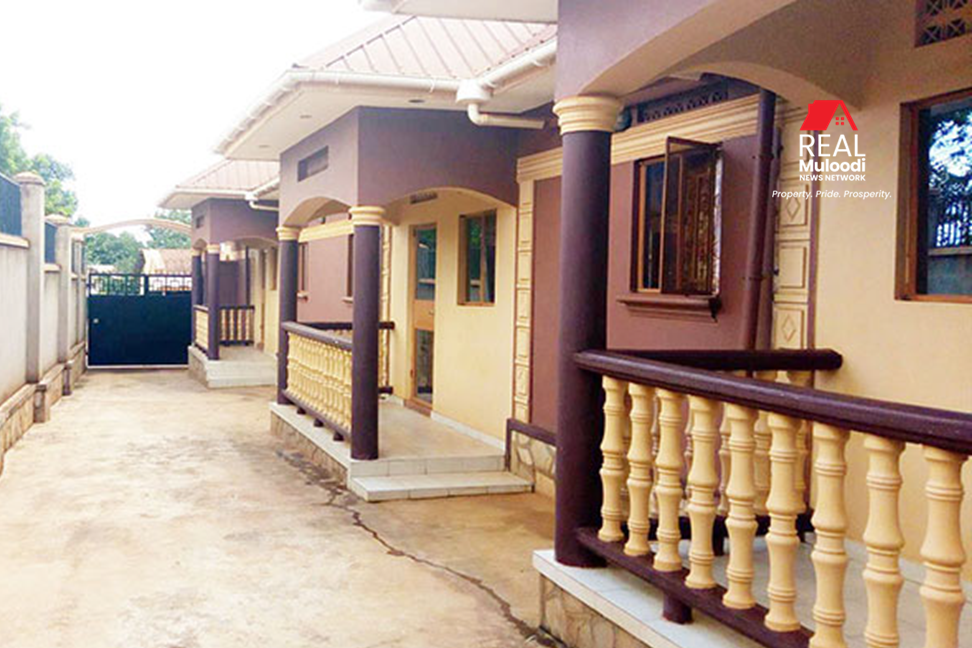UGANDA, Kampala | Real Muloodi News | The Kampala Property Market Performance Report by Knight Frank for the first half of 2024 (H1 2024) highlights the sustained demand for prime residential units in Kampala. This demand is primarily driven by expatriates and Ugandans living abroad.
The report notes that two-bedroom and three-bedroom condominiums are the most sought-after prime residential units, preferred for their balance of space and convenience.
Standalone houses also see significant demand, particularly among larger families and individuals seeking more privacy.
Prime Residential Areas and Market Trends
Historically, Naguru, Kololo, Nakasero, Mbuya, and Bugolobi have been the most sought-after prime residential areas in Kampala, known for their desirable locations and high-quality amenities.
However, the report observes a shift in interest toward areas like Lubowa, Kigo, and Muyenga. This change is attributed to the development of upscale gated communities in these suburbs, designed to compete with the increasingly popular apartments in Kololo.
Kololo has seen a steady increase in apartment supply, prompting developers to create attractive alternatives in nearby areas.
Despite these evolving preferences, the prime residential market experienced a slowdown in H1 2024. There was a notable reduction in sales and lettings, with occupancy levels declining by one per cent compared to the same period in 2023. This decline reflects a market slowdown, attributed to an imbalance between supply and demand.
Market Challenges
The market is currently experiencing an oversupply of prime residential units, creating a buyer’s market. The increased supply is driven by new developments, properties offloaded through auctions and repossessions, and individuals and companies selling properties to meet liquidity needs.
The report also highlights the impact of tight monetary conditions, including a rise in the Central Bank Rate from 10 per cent to 10.25 per cent, the highest since May 2017, alongside high interest rates averaging 20.8 per cent and high inflation levels.
These factors have negatively affected disposable incomes, contributing to the slowdown in market performance.
Trends in Property Development
In established prime residential areas like Kololo and Nakasero, older detached houses are increasingly being demolished for modern apartment blocks. This trend is driven by developers seeking to capitalize on economies of scale by constructing multi-let units, which offer higher rental incomes and reduced operational costs through shared facilities and services.
For example, new developers such as VAAL are entering the market with high-density residential projects in Kololo and Nakasero.
These developments often feature modern designs that appeal to current market demands, maximizing profitability by accommodating more tenants within the same footprint.
However, this trend has led to a growing gap in the availability of standalone houses in these prime areas.
Tenants who prefer the privacy and space of detached homes are finding fewer options, leading many to seek accommodation in secondary residential areas such as Mbuya, Munyonyo, Muyenga, and Bugolobi.
Rising Demand for Modern Interiors and Amenities
Tenant preferences are shifting towards modern interior finishes and enhanced amenities, prompting developers in secondary residential suburbs like Nalya, Kyanja, Bukasa, and Najjera to upgrade their project specifications. These upgrades include high-quality materials, contemporary design elements, and a range of amenities such as fitness centres, swimming pools, and secure parking. As a result, rental and sale prices in these secondary suburbs are rising, making them more competitive with traditional prime residential.
Connectivity and Infrastructure Improvements
Access to fast and reliable internet has become a crucial factor for tenants when choosing accommodation. In response, existing telecommunications companies are expanding their optical fibre networks into secondary residential suburbs, with new entrants like Canal Box enhancing connectivity options in these areas.
Infrastructure improvements, such as upgrading access roads to commuter towns under the Greater Kampala Metropolitan Area Development Programme, are also contributing to the appeal of these suburbs.
Enhanced infrastructure is expected to drive property values and foster greater interest in these locations.
Pipeline Activity and Market Outlook
Pipeline activity in Kampala’s prime residential areas has surged by 67 per cent, with over 1,000 new apartment units expected to enter the market within the next 12 to 24 months.
Developers are focusing on high-density projects featuring one- and two-bedroom apartments, particularly in sought-after neighbourhoods like Kololo, Nakasero, and Naguru. This influx of new units is anticipated to exacerbate the current oversupply in the residential market, potentially exerting downward pressure on rental prices as property owners seek to attract tenants and reduce vacancies.
The report also notes a trend towards incorporating mixed-use elements in new residential developments, blending residential spaces with offices, food and entertainment venues, and convenience retail areas. This approach aims to create vibrant, self-contained communities that offer residents a more integrated and convenient lifestyle.
Short-Term Rentals and Changing Tenant Preferences
There is a discernible shift towards short-term rentals for furnished apartments, particularly in neighbourhoods such as Kyanja, Kisaasi, Najjera, Bukoto, Mutungo, Muyenga, and Kigo. This trend is driven by lower occupancy levels in higher-density apartment blocks.
Landlords are increasingly favouring short-term leases to maintain high occupancy rates and attract a varied clientele, including expatriates, business travellers, and vacationers.
The rise of online booking platforms like Airbnb and Booking.com has facilitated this trend, making short-term rentals more viable and attractive in areas where traditional long-term leases may face higher vacancy rates.
The Kampala real estate market is experiencing significant shifts in H1 2024, with a focus on prime residential units driven by expatriates and the Ugandan diaspora.
The market is marked by evolving tenant preferences, increased supply, and changing property development trends.
As the market continues to adapt to these changes, the demand for prime residential units in Kampala remains strong, albeit with challenges posed by an oversupply of properties and shifting market dynamics.
READ MORE LIKE THIS:
Knight Frank to Launch H1 2024 Kampala Property Market Performance Review



